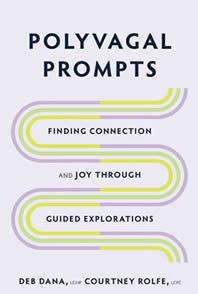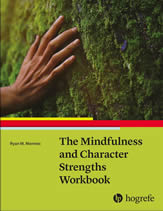User Friendly: How the Hidden Rules of Design are Changing the Way We Live,...
I found myself fidgeting and incomplete after only six hours of a power outage at my house yesterday. Needless to say, every day we wake up to our alarms beeping like a virtual mom then head to the espresso maker bringing fresh smells of the day within seconds. Our driver is on his way to pick us up through applications such as Uber. We unconsciously check our phones five times in a minute so we can engage with our friends across the globe with several taps and clicks on the little shining screens. It’s not inaccurate to say that we are all ‘cyborgs’: we are half human, half machine. We are incomplete without technology.
You Die at the End: Meditations on Mortality and the Human Condition
You Die at the End consists of 180 “meditations”, Ferraiolo’s “ruminations” in response to Biblical scriptures, Old Testament writings. Early Stoics believed in a higher power (Zeus, God, the Universe) so Ferraiolo’s use of Christian scriptures was not surprising. Each scripture is followed by Ferraiolo’s interpretation of and implication in our lives today. His ‘ruminations’ typically start with a question—a guide to look within, to assess our self-perceptions and reasons for being— followed by startling reflections and revelations.
A Life Worth Living: Meditations on God, Death and Stoicism
Can philosophers create change? Or do they merely entertain intellectual conversations, ask abstract questions about the nature of human thought, the nature of the universe, and the connections between them, and then ponder the possibilities? If you’re William Ferraiolo and you practice Stoicism, a philosophy of personal ethics, you are in fact learning “spiritual exercises” that lead to the development of “self-control and fortitude to overcome destructive emotions”.
Learning From the Germans: Race and the Memory of Evil
Imagine revisiting a country that once committed atrocities to your own populations; seeing people going about with their everyday lives normally or waving, smiling as they pass you by. How would your instincts lead you to react? Forgive? Move on? Or even, as Susan Neiman suggested, learn from them?
8 Keys to End Emotional Eating
“I don’t care, I’m just gonna do it.”
“It feels good to break the rules.”
“Now it’s me time.”
I’ve heard my inner voice utter these statements more than once; typically involving food and wine. According to Howard Farkas, these sentiments align with his transgressive model of emotional eating: feeling driven to engage in behaviors that feel subversive and doing them despite negative consequences or guilt (p.94). Emotional eaters live with a recurrent pattern of having an unwanted urge to eat; they are preoccupied and conflicted about it, yet act on it anyway.
Neuro-Narrative Therapy: New Possibilities for Emotion-Filled Conversations
For some time, most narrative therapists focused their style of treatment on an externalized way of objective story telling. However, few of the treatment guidelines in the narrative realm focused on the importance of emotions. Jeffery Zimmerman, a pioneer in connecting neuroscience with narrative therapy, thus used this book to raise awareness of the importance of privileging affect in narrative treatments.
Understanding Domestic Violence: Theories, Challenges, and Remedies
Images flash when we talk about domestic violence—stereotypical scenes of minority women bearing brutal slaps falling on their fragile bodies. However, these images only represent one of many forms of domestic violence and its victims. The content of ‘violence’ exceeds what we might imagine. Aiming to give readers a more holistic understanding of domestic violence as well as suggestions for professional interventions, Herron and Javier define domestic violence comprehensively, offer models of aggression, and include accurate data and truthful narrative stories to back up their arguments. With a clear four-part structure, the book starts with an understanding of the fundamental models behind the phenomena of domestic violence then progresses to the limitations of interventions.
The First Cell: And the Human Costs of Pursuing Cancer to the Last
Oncologist Azra Raza’s The First Cell: And the Human Costs of Pursuing Cancer to the Last presents an innovative perspective on the ongoing war on cancer. Drawing from both personal narrative and cutting-edge research, Dr. Raza underlines the importance of early detection and lends an empowering voice to the suffering of cancer patients.
Good Habits, Bad Habits: The Science of Making Positive Changes that Stick
Wendy Wood’s Good Habits, Bad Habits reflects her explanation of the subject of habit formation. Integrating her own research along with other scientific studies, Wood attempts to explain why bad habits are so hard to break and why good habits are so hard to sustain. Wood provides readers with an understanding of both the evolution of research regarding behavior change along with a look into how they can implement habit changing strategies in their own lives.
On the Brink of Being: Talking about Miscarriage
he Brink of Being begins with a tragic look back into Bueno’s personal ordeal with miscarriage and the agony that she went through. Her writing is pain ridden and emphatic, taking the reader down the vortex of her deeply bruised emotions. It is almost impossible to put the book down once you start reading it; it feels disdainful to do so. Bueno explains the lack of resources available to women struggling as she did and the vigor with which she wanted to build a network to support these women.














